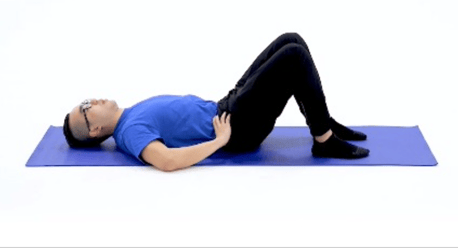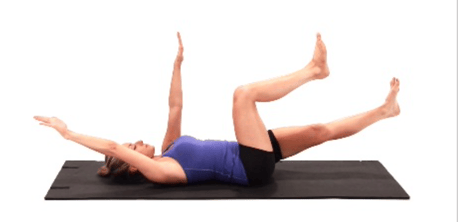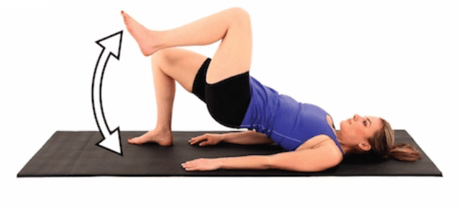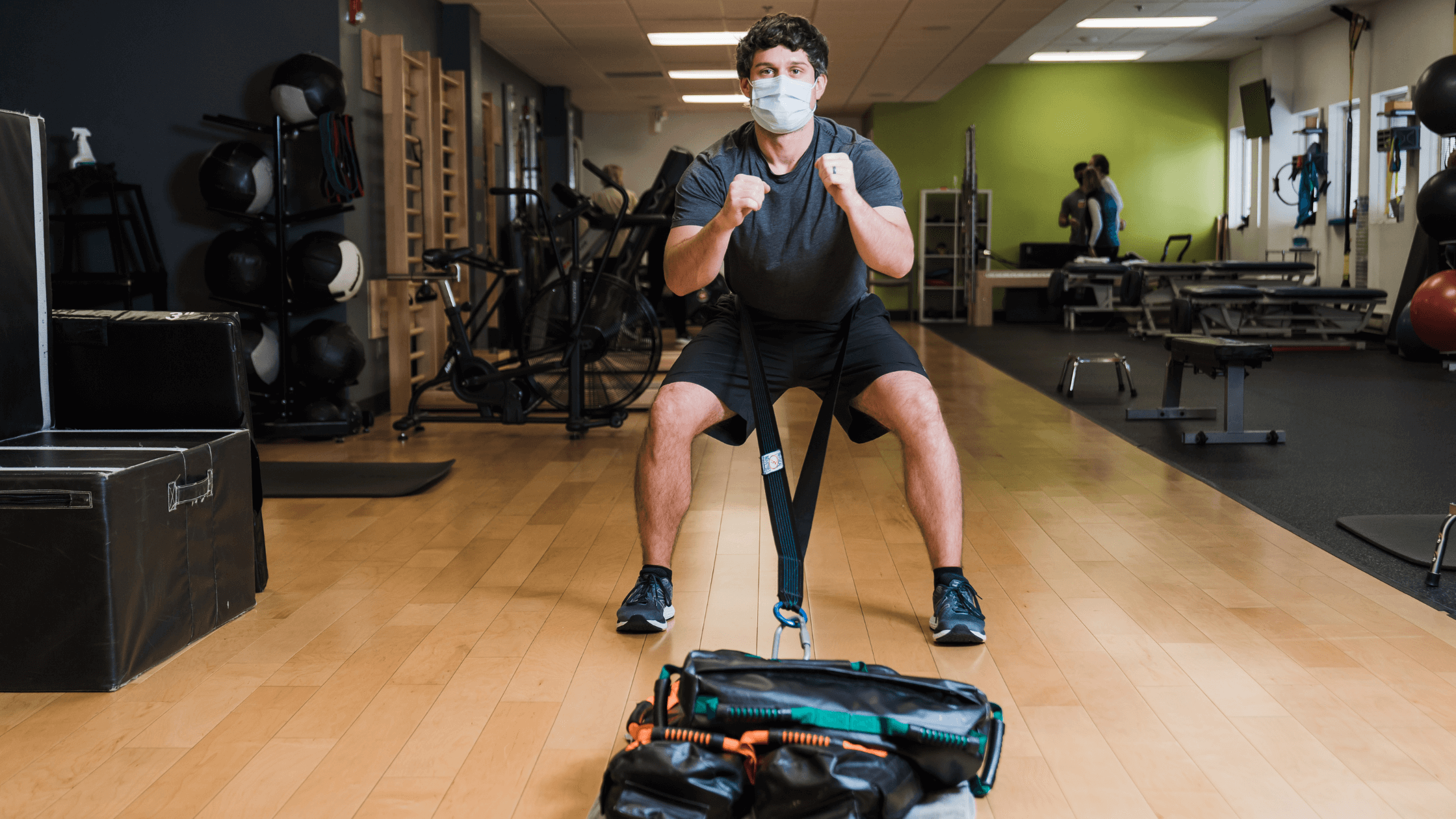Licensed Physical Therapist, PT, DPT // Dry Needling Certified // Titleist Performance Institute Certified // Director of Player Development, EW Golf // EW Motion Therapy Homewood // EW Motion Therapy Trussville
When you think of injuries that can occur while playing sports, you may think of tearing an ACL, breaking an arm, or spraining an ankle. One condition you might not even be aware of is a sports hernia (athletic pubalgia), which can occur with overexertion in any sport. So how do you get a sports hernia, and how do you treat it when you get one?
While the term sounds scary, there are many exercises and stretches you can do to help you get back to performing the way you want. Physical therapy can be a great option to help you return to activity in a safe, observed environment. We work with many athletes at EW Motion Therapy to improve recovery, prevent future injury, and improve performance. Even if you do not choose physical therapy with us, the goal of this article is to provide some information on sports hernias so you can make the best decision for your health.
This article discusses some possible causes of sports hernias, how they affect functional movement, and how physical therapy can help. With this information, you can pursue the best treatment and return to your sport as soon as possible.
What causes sports hernias?
A sports hernia is technically not a hernia, so the medical community prefers to call it athletic pubalgia. A hernia is a bulging of a structure or tissue through an abnormal opening in the body. With a sports hernia, no body parts are bulging through injured tissue - instead, it is an inflammation or lesion of the attachments of muscle on the pelvis, usually caused by strength or flexibility imbalances. These muscles are traditionally the transverse abdominus, one of the four core muscle groups, and parts of the adductor group, a large group of muscles on the inside of the thigh. This article will continue to refer to the condition as a sports hernia.
There are five key indicators of a sports hernia:
1. Tenderness on the front of the pelvis
2. Pain with an abdominal crunch
3. Groin pain
4. Pain when squeezing the thighs together
5. Pain with sprinting or cutting
Sports hernias typically affect males more than females, and may worsen over time if left untreated. Many things can cause sports hernias, including improper lifting mechanics, poor breathing patterns, core weakness, and repetitive twisting or bending. It can be challenging to determine the cause of your sports hernia, but you might be able to determine what movements involved in your sport are causing you pain. For example, a pole vaulter with a sports hernia might experience increased pain at the peak of their jump when activating their core muscles to clear the bar.
How do sports hernias affect movement?
Because your core and legs are involved in many movements, countless activities in your day might become more difficult with a sports hernia. Any activity that requires bracing or activation of the core, such as lifting or twisting, may cause increased symptoms in your groin area. Additionally, activities that require bending at the hip or squeezing your thighs may increase your pain. The list of activities that demand these types of movements or activation is endless, but may include running, jumping, cutting, squatting, or even walking up and down stairs.
How can physical therapy help?
A primary benefit of pursuing physical therapy for a sports hernia is that it is a non-surgical, conservative approach. If your pain has worsened in the past 3-6 weeks, or if you notice a protrusion from the painful area, you should rule out that you need surgery by talking to your doctor first. However, physical therapy can be a great treatment for mild to moderate sports hernias.
If you choose physical therapy, your therapist will work with you on techniques to reduce pain with activity by improving strength, activation, and flexibility of the muscles involved. They will teach you proper breathing techniques, how to activate the deep core muscles, and proper mechanics with sports-specific movements such as lifting, running, or jumping.
As part of your treatment, your therapist will assign home exercises for you to do. Here are a few examples of exercises our therapists have given for sports hernia patients. If you want to try any of these yourself, check with your doctor to ensure you can do them safely.
Supine Transversus Abdominus Bracing - Hands On Stomach: Begin lying on your back with your knees bent, feet resting on the floor, and your fingers resting on your stomach just above your hip bones. Tighten your abdominals, pulling your navel in toward your spine and up. You should feel your muscles contract under your fingers. Hold this position, then relax and repeat. Make sure to keep your back flat against the floor and do not hold your breath as you tighten your muscles.

Supine Dead Bug with Leg Extension: Begin lying on your back with your knees bent and feet flat on the floor. Tighten your abdominals, lift both legs to a 90-degree angle, and your arms up toward the ceiling. Slowly lower one arm overhead and straighten your opposite leg at the same time. Return to the starting position and repeat with your other arm and leg. Make sure to keep your abdominals tight and your back flat on the floor during the exercise.

Marching Bridge: Begin lying on your back with your arms lying straight to your sides, knees bent, and feet flat on the ground. Tighten your abdominals and slowly lift your hips off the floor into a bridge position. Lift one leg off the ground, keeping your knee bent. Lower it back down and repeat, alternating between each leg. Make sure to keep your back straight throughout the exercise and your arms flat on the floor.

How else can I recover?
Now you know more about sports hernias and how physical therapy can help. Along with various exercises and techniques, there are other ways you can help your body recover from a sports hernia, including proper nutrition, drinking more water, and using a cold compress to alleviate pain. Nutrition and hydration are not only helpful for healing but also for improving quality of life and giving yourself the best chance at successful outcomes.
Any sports injury is challenging to go through, both physically and mentally. Any athlete knows that time away from your sport can be full of lost opportunities simply because your body could not keep up with your ambition. We work with many athletes at EW Motion Therapy who want to perform better but need extra help getting their bodies in the best shape. That is why our physical therapists and personal trainers work together to develop the best treatment plan for you to improve performance and prevent future injury. If you are interested in physical therapy or personal training with us, fill out the Request an Appointment form on our website, and someone from our staff will contact you within 48 hours with your next steps.


